I recently finished a campaign of Dungeons & Dragons, primarily as the Dungeon Master (DM). Now that I’ve had over a month to process it, I thought I could write down the lessons I’ve learned, and hopefully other players and DMs could learn something as well. I’ll be telling this story in chronological order. I do want to mention, this is by no means the only things you need to know as a Dungeon Master. In fact, you will never know everything there is to know about being a Dungeon Master. These are just things I’ve learned in this particular story.
Before this game, I had limited knowledge of D&D. I had played a couple games in High School with a group that got bored of their story after a few sessions, and would reroll characters at level 15, because it was more fun to be powerful. It was Fourth Edition (4e), and we didn’t have a great concept of story or character, and it was really a place to let go of impulse control, and set everything on fire to see what would happen. Then, in college I knew some people that played, but I wasn’t sure if I liked them enough to spend four hours every week with them. So I did research, created some characters, and just tried to understand the world a little better.
Keep on the Shadowfell: The Rule of Cool
I started my group at a party, when I mentioned that a coffee table would work great for a game of D&D, and when two other people I hadn’t really met before agreed, I knew we had a party. I really wanted to DM myself after reading so much before. I knew I didn’t like how my friend in High School did it, so I wanted to try myself. One of the other guys from that party was usually a DM with his old group, but he was happy to finally have a break and play for once.
I found a module that seemed solid for 4e (5e had just come out, but I hadn’t gotten the books yet), called Keep on the Shadowfell, which was a low-level dungeon crawl to defeat a cultist that was summoning Orcus. It was in that game I first learned the “Rule of Cool,” the idea that the rules aren’t meant to be static like in video games, that they can bend to the story. I learned this when one of my players wanted to stab a sleeping goblin’s in the neck, but I only let him roll a 1d4 (low possible damage), because that’s what the books said a dagger could do. It felt unsatisfying for the players, for myself, and didn’t make sense with the reality of the world.

The midboss of this story, Ninaran, was meant to be disposed of on the way to the Big Bad Evil Guy (BBEG), Kalarel. However, as she gained the party’s trust, and then betrayed them, it made sense she would run away (with 1 HP left). Thus we had our first loose end.

Vol-Thagoryx: Give and Take
Next, a little exhausted, I decided I would enjoy going back to just playing for an adventure, so the other DM, Scott, took over. For his story, Scott created an entire city, called Vol-Thagoryx, that was complete with a university, different powerful families vying for control over the city, and even the catacombs of the older city underground, left abandoned. This was homebrew world building in a way I hadn’t seen before, and I learned a lot of what this world could be. My previous story took place in a small town, whereas his was a full metropolitan area. There was no reason I couldn’t have, but I probably wouldn’t have made such a large city in my game before, because cities like that don’t exist in Lord of the Rings or the Chronicles of Narnia, which were my points of reference at the time. So taking the time and letting someone else have the spotlight of creating the world made it so much richer than I could have done on my own.

My character that I used during this time was a Half-Orc pirate named Tongar, who was a goofball and took a backseat to the story, so I could focus on how Scott was making the story, instead of immersing myself. However, there was a moment where the party had to sneak into a university professors office, and steal something. I knew that Tongar was not built for that, so instead I decided to streak across campus, distracting the guards. While this was a huge laugh from everyone and I had the spotlight, it also removed me from the picture so the sneaky characters could do what they do best, giving them the spotlight. There was also another moment in that adventure where the rogue and the druid teamed up as a Panther-riding thief, who some NPCs noticed, and became an urban myth within the world. The stories of that myth came back up a few times, each time being a little more exaggerated, as people tell the story to each other.

Before, whenever I played, everyone was trying to take the spotlight, but no one was willing to give it, DM included. Seeing how both DMs and players can give the spotlight more than they take it, really showed how much more fun the story can be for everyone.
Dwarven Civil War: Delegation
It was my turn again to run an adventure, and I was interested in the variety in creatures, such as Dwarves. There was a Dwarven City who split into two groups generations ago over what Dwarves should be: Industrious or Combative? This caused them to split into two separate cities, and despise each other. However, this fight was coming to a boiling point, and there was a small halfling village between the cities that was in danger of being destroyed by the upcoming war.
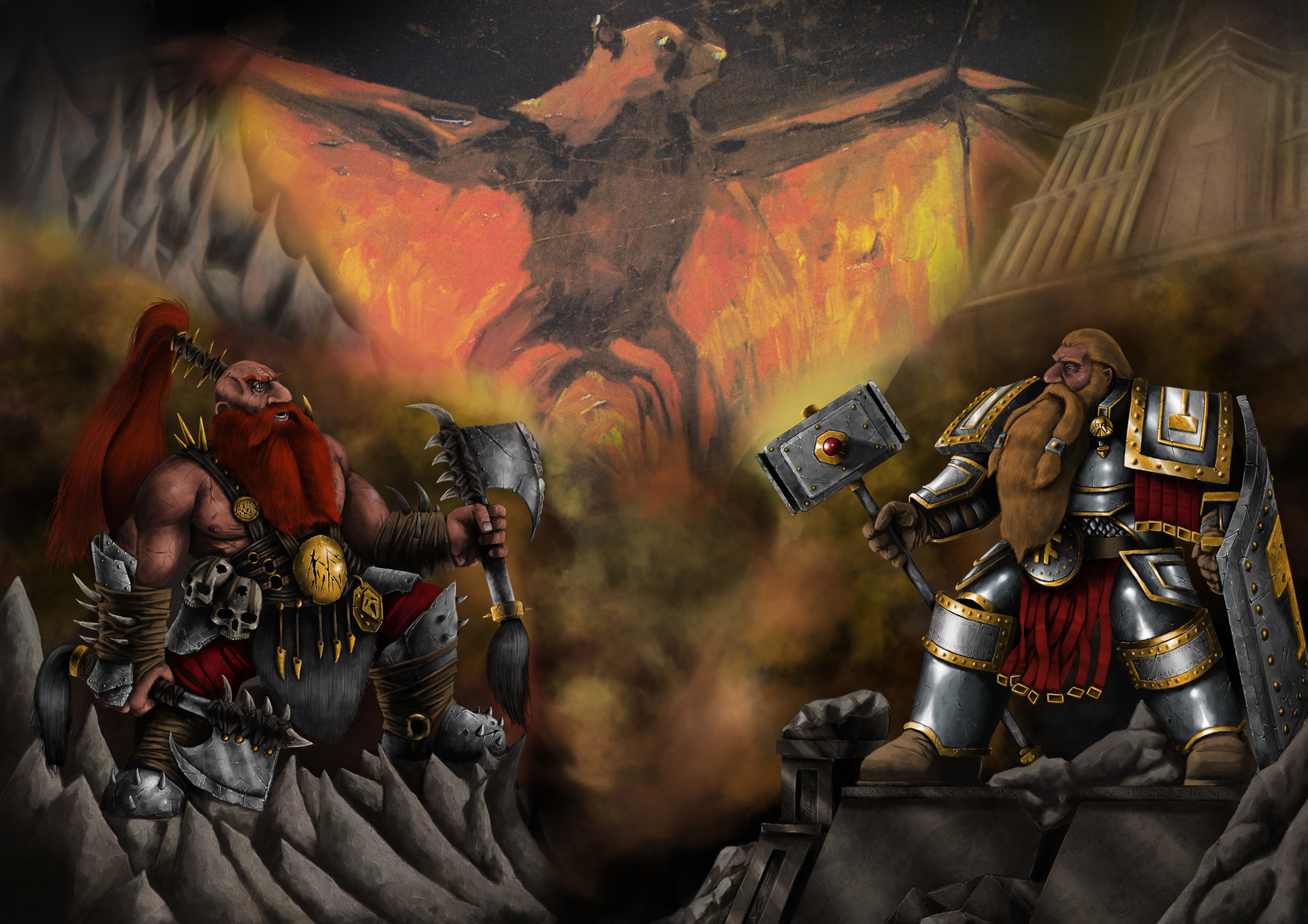
I knew I wanted to build out these cities like Scott had done before, but I didn’t know how. So instead, I tasked my players to do so. I asked three of them to each build one of the cities, but in Minecraft. I gave them some aesthetic elements I wanted, as well as inspirational pictures from video games/movies, but told them what it looked like was ultimately up to them, as long as it accomplished what I needed it to for the setting. They did so fantastically, with so much more creativity than I could have. They weren’t being bogged down with character relationships and story beats, they just built cities. Because of this, not only were the cities far more detailed and elaborate than I would have imagined, but also my players felt more engaged with the story, because this was their story too! This was a world that they helped build, so they had a sense of ownership over it. When someone asked a question about the city, I would give that question to the city’s builder, and let them make the decision of how big the fountain in the town square was.
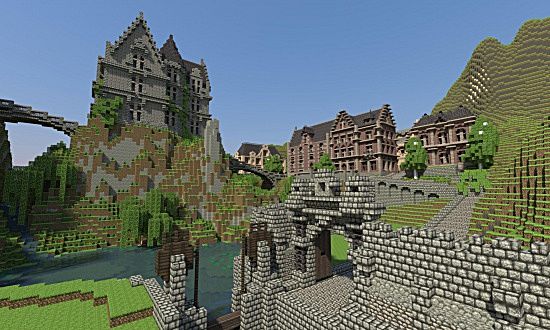
Scabindraxis: Playing Honestly
Again, Scott had his turn, and I was able to play a character. Tongar left after Vol-Thagoryx, so I made an Elf Wizard, who focused in Divination. Because of this, he believed himself to be the smartest person in the room, because he knew things no one else could know. Of course, that personality extended even when I made a dice roll, and a critical failure.

Elaric, my confident wizard, tried to determine whether this MacGuffin we were after, “The Golem Heart,” was actually as sacred as the local population believed it to be. Then I rolled a Natural 1, a critical failure. Elaric believed that this magical artifact, was actually a piece of chocolate that had gone stale. I knew that this meant the Golem Heart really was the relic the locals claimed it to be, but Elaric, ever sure that he sees things no one else can, stood defiantly in his convictions. While this never hurt the story or the other players fun, it was something Elaric believed throughout the adventure. It became such a running joke, that when a festival came, celebrating the Golem Heart, Scott was sure to include that there was a certain concession being sold from a food cart, a Golem Heart made of chocolate. Of course, this only furthered Elaric’s belief that he was right. The story could end there, but at the very end, when the Golem Heart was used for it’s purpose, and clearly and undeniable had magical properties, Elaric had no choice but to accept he was wrong, and apologize for not trusting his party. It allowed for character development, because even though I knew something, I played Elaric honestly with the information and world view that he had.

Curse of Strahd: Stories Scale
In between these two adventures, I got married, and thus didn’t have time to prepare an adventure, but the 5e Curse of Strahd book was just released, and Scott really wanted to run it, so he did, and Elaric was able to continue.

Curse of Strahd is meant for character levels 1-10, but at this point we were starting at level 11, meaning that technically this was supposed to be too easy for us, as well as being a smaller story we should have moved away from. But that didn’t stop Scott from running the game, so he modified it. Not only did he change the stats of some monsters, so it would be a fair fight, but he changed the context as to why we were there in the first place.
Some background: Ninaran has been around this whole time. She was involved at Vol-Thagoryx, at Scabindraxis, and we realized she was in the middle of a conspiracy to topple the gods’ pantheon. Through careful planning, she has now been raised to a full pantheonic god, to replace Zehir (who had actually killed Corellon and was impersonating him, but that’s a story for a different day).

So how does this relate to Strahd? Well, Ninaran was attempting to recruit him as her “Champion of Undeath,” because in our world, every god has a Champion, or First Officer, for each of their domains. So suddenly this story is no longer about saving the people of Barovia (though we were doing that too), the story was about stopping Ninaran from further gathering power, and stopping her plan to dismantle the pantheon. Not only that, but he adjusted other parts of the story (like the Amber Temple) to build into Ninaran’s backstory. So even if you take pre-made stories, you can always make adjustments to scale up, or down, so it works with your overall campaign.
Fall of Lolth: Timing Out Information
My turn to run another adventure! Within the story, Lolth was involved in the conspiracy to take down Corellon, help Ninaran rise, and destroy the pantheon. But the party didn’t know that. The party didn’t even know that Lolth was involved. That is, until the third session. But they didn’t know how she was related to the plot hook of spiders attacking the city, until the second session. I gave away the whole story that I had in mind within the first couple sessions, even though I was planning for this story to be several months long (it ended up lasting 8 months). So as they worked up the chain of command, from low-level Drow, up to Menzoberra, and finally Lolth herself, they kept asking more questions, trying to find the rest of the story that surely I would be hiding from them in such a dark, intrigue based adventure. But no. I had nothing else. I gave up all the information I had as soon as I could, so that the party could know what to do. This just made my party confused, trying to uncover secrets they were sure were there. The atmosphere I made was all about things hidden in the dark, it only makes sense that would follow with motivations and ulterior motives.

I realized, not every character has all the information, and in fact some characters might have incorrect information. Have specific mysteries in mind, specific reasons why the players would receive that information, and how willing different characters are willing to give up that information.
Finale: More Than One Ending
The time has come. Ninaran is at full God powers, and the party is realizing why she is toppling the pantheon, and what she intends to put in it’s place. Our group of players has changed throughout the story, with some people playing some chapters, and some playing in others. Between this, and other people hearing about this story and wanting to see how it all ends, we had a total of 11 players, so Scott and I made the decision to split the party, and each of us DM our own group, who are on parallel journeys. We all met up at the first session, split, and all met up for the final session.

In my half of the story, we were going around the cosmic wheel, visiting different planes of existence, meeting different gods, and seeing different perspectives on the moral quandary we realized we were facing, law or chaos.
Obviously, being the finale, we wanted to do more than just wrap up the overarching story, but I also wanted to help people feel like they are wrapping up their character’s story, as well as tying up loose ends that were left from the story.
We knew that we wanted to get this story done by the end of summer, because we had college kids in our group, that would be leaving by September. So we had a specific amount of sessions ahead of us, to get the players, and their characters, ready for the grand finale. While I usually am not a fan of railroading a story, knowing that I had a limited amount of time to get to a specific spot, it was a necessary sin.

So I planned out every week, where we would be, who we would meet, what the goals to accomplish would be. I left about three weeks of wiggle room, so the players could still be spontaneous and it wouldn’t ruin my whole story. During each of these story beats, I would find a sub-story to wrap up, including character arcs. This allowed everyone to share the spotlight, as each session was focused on one of my players, and how they are coming to terms with the end of the campaign. Because of this, no matter what happened in the finale, even if they all died, they would still feel like they had a satisfying conclusion.
Again, planning the story on this level usually is something you want to avoid, but when you have such a large story you are wrapping up, within a limited amount of time, and another group is expecting you to be ready at this pre-determined point, it was something I had to do.
More Lessons Along the Way
Throughout this campaign, I of course learned more than seven things, so here are some other important points.
Character’s Need Reasons
People don’t just do things that is first offered to them, with the least path of resistance, so why then would Player Characters? There are definitely players who show up every week, ready to do whatever it seems like you have planned, and are just along for the ride. But even they will come to a point in your game where the next decision for them isn’t entirely obvious, and if you haven’t given their characters a personal reason to care, then they won’t know what to do next. Find a reason for your characters to care about the story, so they can be self-motivated to complete it. It doesn’t have to be a unique reason for each character, and some people will follow another character for a reason, so just know who are the strings you need to pull, and give them a reason to pull themselves.
Enjoy the Little Things
As I was running that grand finale, determining the fate of the multiverse, I was helping a newer DM make adventures for her level 1 group of players. Her plan was to have the group be a mercenary guild, so every session was a one-shot, and the job would be complete by the end of the day. Her first job was called “The Curse of Stevensville,” where there was a curse over a small town, and every proper noun was replaced with “Steven.” This brought me so much joy, that I literally burst into laughter, and told the rest of my group about it. That low-level, largely inconsequential adventure is just as much what Dungeons & Dragons is about, as fighting with the gods to determine the fate of the multiverse.

Good vs Evil?
You think of all the great epic fantasy stories, they all revolve around good versus evil. Frodo defeating Sauron, Harry defeating Voldemort, Luke defeating Vader. There are other stories to tell though. Perhaps Law versus Chaos, which can also be explained as Security versus Freedom, the plot of Captain America: Civil War, where it’s not clear cut who is “good” and who is “evil.” Perhaps your story is Man versus Nature, where someone wants to destroy a large city, because they are destroying the home of thousands of creatures that live in the forest. Who’s to say that the life of one Elf is more valuable than the life of one dryad? Man versus Society, let’s say that there is an evil king who is using a spell on his people to make them brainwashed into joy and do his bidding. Will you release them, thus sending them into despair for whatever acts they have committed under his will? Will you ruin the lives of hundreds of people, just because you don’t like the guy on top? How is that not evil in itself? There are more stories to tell that are more interesting than just stopping “evil.”

Off Screen NPCs
As a DM, you know that an important part of immersion for your players, is if the world you’ve created is “living.” Do these NPCs feel like real people with their own hopes and fears, or are they just there to deliver dialogue? Well, if they are real people, then what is happening when the players aren’t around? Do side stories that the players ignored continue, thus causing a larger issue later? What about someone small they saved long ago, who gathered their own confidence and later can save the party? You don’t have to do this with every NPC, because that would take more time than planning for the actual story; but if there’s an NPC that your party takes a particular liking to, bring them back around. If there’s a storyline that one player wanted to pursue, but no one else did, have that one come back with consequences, because there’s a payoff in believing something was important.
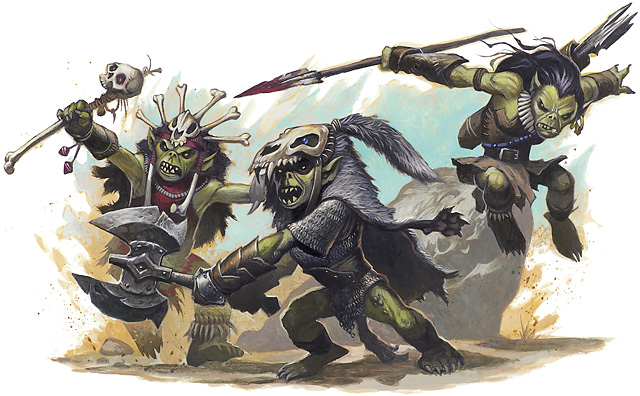
Real Life Reflections
I don’t believe that art is an escape. I think art is a way for people to process the world around them in a way that’s safe. While you might be playing a Half-Elf with a blessed shield from the Goddess of Nature, this game isn’t escapism. It’s a place for you to explore parts of yourself you aren’t able to in the real world. Your Half-Elf Paladin doesn’t have the chronic illness you do, and is in a world where the stakes of danger are much higher than in your office job. Therefore, it’s a place to ask yourself “If I had the power to help those in need, how would I? By killing evil forces? Or by healing them? If I could do something selfish and no one would know, how big or small of an act would I find acceptable?” In my game, we had a player who just gave birth to her first baby girl, and was having her entire worldview shift, as her focus on life moves from herself, to her infant child. To reflect, this, whether or not it was intentional, she, a Dragonborn, received a Dragon Egg, and raised the baby dragon as her own child. During the finale as I was wrapping up everyone’s storylines, I killed her character, but allowed her to continue playing with the group as the young dragon. I did this to help her come to terms with the very real fact that her child will live on after she is gone, and what kind of life she wants her daughter to live, what kind of lessons does she want to instill in her? Perhaps you lost your friend or sibling, they died and you never got to say goodbye. In Dungeons & Dragons, you can give your character that exact same moment in their backstory, and you can literally go to the afterlife, find them, and find the closure you’re looking for in your life.
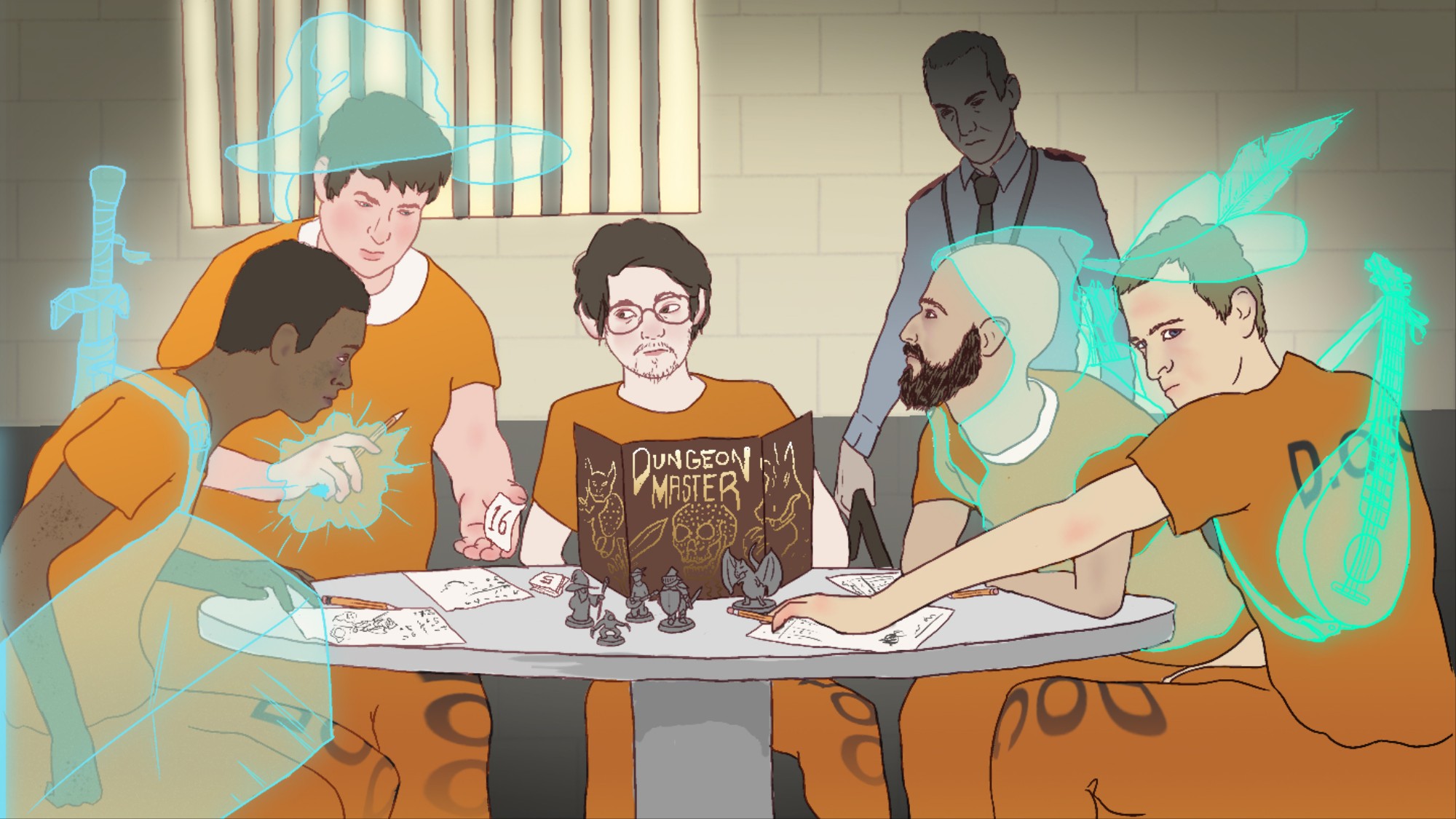
In our second to last game, my last time with my party before the big finale, we climbed Mount Celestia in order to reach enlightenment, and level 20 along with it. I asked a lot of questions on the journey to my party, questions about their backstory they have never thought of before, and how their characters processed them. I asked about family you’ve left behind as you have lived your life as your own person, and how your family misses you. I asked about the unintended consequences of saving the day for a town, and innocent people who’s lives were negatively affected by your actions. I asked what your greatest fears are, and made you face them directly, knowing it was the only way to continue. When questions are asked of you like this, and you are put on the spot, you have no choice but to pull from your real life, and come to terms with who you are as a person, by looking at yourself and your actions from an outside perspective. I made a table full of adults start crying, myself included, about our fictional characters as we lost our friends all over again, giving each person space to grieve over these losses. This is what art is made for, it’s a safe space for you to understand your own life, to process the world around you, and to learn to move one with the love, help, and support of those you trust.

I had so much fun with this game, and it has meant so much to me. I will remember this adventure for the rest of my life, as I’m sure many of my players will. What Dungeons & Dragons is has changed so much for me in the last three years, I can’t wait to see what it will mean for me three years from now.

Reblogged this on DDOCentral.
LikeLiked by 1 person